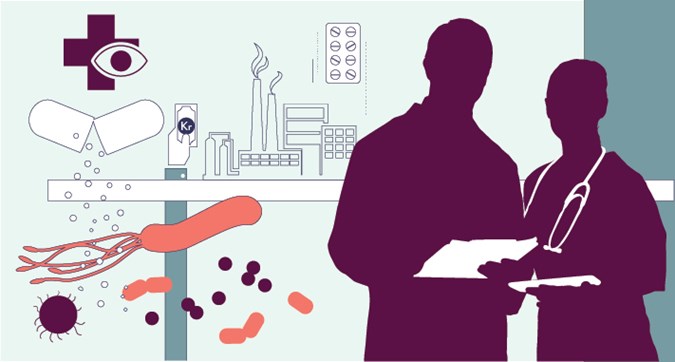Antibiotics are drugs used to prevent and treat bacterial that causes infections and disease. Antibiotics have been used for many decades to treat illnesses caused by these bacteria. Indeed, the world rejoiced as they were discovered.
Antibiotic resistance
Antibiotic resistance occurs when an antibiotic has lost its ability to control bacterial growth effectively. In other words, the bacteria are “resistant” and continue to multiply in the presence of sufficient levels of an antibiotic. Bacterial infections in humans or animals that have antibiotic-resistant are becoming difficult to treat than those infections caused by non-resistant bacteria, and resistance occurs at different levels from the mildly resistant bacteria to the super bugs.
Causes of antibiotic resistance
Antibiotic resistance is a natural process whereby bacteria can attack antibiotic and attai a better chance of survival. Sadly, the current levels of antibiotic resistance are getting high because antibiotics are either being overused or abused. When an antibiotic is abused or misused to treat viral illnesses such as common cold, it creates an enabling environment for the development of antibiotic-resistant bacteria
Bacteria resistance
Some bacteria have natural resistance to certain types of antibiotics. These bacteria can acquire the resistance from other organisms or by a genetic mutation. These are rare impulsive changes of the bacteria’s genetic material, as different genetic mutations result in different types of resistance. Some mutations help the bacteria to produce potent enzymes that deactivate antibiotics, other mutations eradicate the cell target attacked by the antibiotic while some mutations seal up the entrance ports that give the antibiotics access into the cell.
Bacteria can get antibiotic resistance genes via other bacteria in various ways either by undergoing a division process called conjugation, whereby bacteria can transfer genetic material like genes encoding resistance to antibiotics from one bacterium to another. Viruses are another mechanism for passing resistance traits between bacteria.
Any bacteria can acquire genetic resistance factor, either by uncontrollable mutation or through a genetic transfer with another bacteria, can resist one or more antibiotics. Because bacteria can collect multiple resistance traits over time, they can become resistant to many different families of antibiotics.
How antibiotic resistance spreads
Genetically, antibiotic resistance spreads through the population of the bacteria both “vertically,” when new groups inherit antibiotic resistance genes and spread horizontally when bacteria transfer specific genetic material with other different bacterial species. Naturally, antibiotic resistance spreads through the movement of bacteria from one place to another; these resistant can be transferred through water, wind and human can move the resistant bacteria to others either by coughing or coming in contact with dirty hands.
There is a global need to change the way antibiotics are being used and prescribed. Though new medicines are being developed regularly, without a change in behavior which includes a method to reduce the spread of infections through good vaccination hygiene, antibiotic resistance will continue to be a severe threat.
Need a Primary Care Physician? Primary Medical Care Center is an Urgent Care Miami provider serving Miami-Dade and Broward County with Two Convenient Locations. Call Now: 305-751-1500 or visit us (11500 NW 7th Ave., Miami, FL 33168, 2412 N State Road 7, Lauderdale Lakes, FL 33313).
